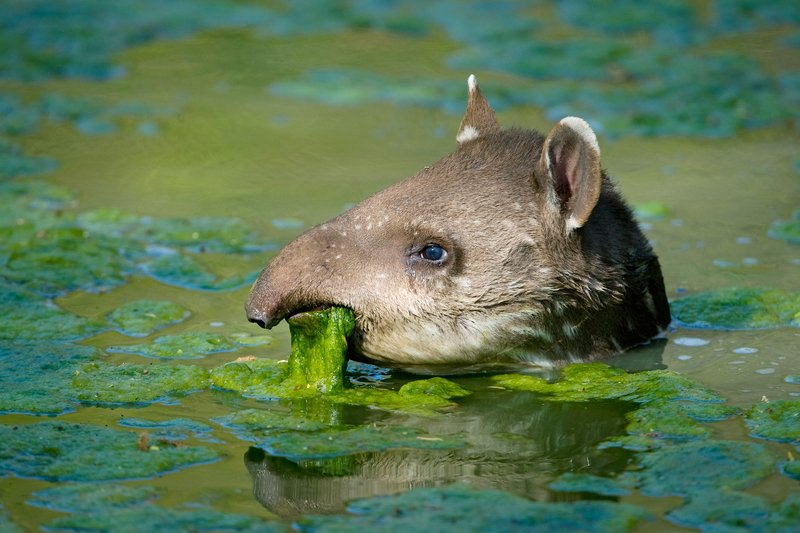
Tapirs may not be the first animals that come to mind when thinking of wildlife dangers, but they deserve a closer look. Like many wild animals, their behavior can be unpredictable, especially if they feel threatened. So let’s dive into the world of tapirs, exploring what makes them tick and whether they pose any risks to humans.
Understanding Tapirs
Before we jump into whether tapirs can be dangerous, let’s get to know these incredible animals a bit better. Tapirs are large, herbivorous mammals known for their distinctive bodies and long snouts. They can weigh anywhere from 400 to 900 pounds, depending on the species, and most tapirs have thick skin that provides some protection from predators. Their habitat mainly includes rainforests and wetlands, where they thrive on a diet of leaves, fruits, and aquatic plants.
You might be wondering about their behavior. Tapirs are typically solitary animals, roaming alone or in small family groups. They have a shy disposition, preferring to avoid confrontation. However, they can be surprisingly fast, capable of running up to 30 miles per hour when they feel threatened. This quickness makes them hard to catch in their dense habitats.
Are Tapirs Aggressive?
Now, let’s address the question on everyone’s mind: Are tapirs aggressive? The truth is, tapirs are generally docile creatures. They’re not known to actively seek out confrontation or danger. However, like many wild animals, they can be *defensive* if they feel threatened or cornered. In such situations, they might charge, which can be dangerous given their size.
Think about it this way: If you corner a large dog, it might react aggressively out of fear. Tapirs can exhibit similar behavior. For the most part, though, tapirs prefer to avoid humans and other threats by retreating into the thick underbrush of their environments. So, while they have the capacity for aggression, it’s not something that usually happens without provocation.
Can Tapirs Hurt Humans?
While tapirs aren’t typically dangerous, it’s still essential to respect their space. A frightened tapir can bite if it feels cornered, and their strong jaws can inflict serious damage. However, tapir attacks on humans are rare, mainly because encounters between the two are infrequent. Most humans will only see a tapir in a zoo or during an adventurous hike through their natural habitat.
If you do find yourself in tapir territory, keep a safe distance. Just like with any wildlife, it’s best to observe them from afar and not approach them. Most tapirs would rather flee than fight, so giving them room is usually the best approach. It’s all about understanding and respecting their nature.
Tapirs and Human Encounters
When it comes to human encounters, tapirs generally keep to themselves. This shy nature means that most people won’t experience any confrontations. However, some situations can lead to interactions, especially in areas where tapirs and humans overlap, like near farms or other human settlements.
Farmers in certain regions may report tapirs raiding crops. This behavior can sometimes lead to conflicts, as farmers try to protect their land. It’s worth noting that these interactions are usually due to the tapir’s natural instincts to forage for food rather than a desire to confront humans. If farmers can implement non-lethal methods to deter tapirs, both parties can coexist more peacefully.
What To Do If You Encounter a Tapir
If you happen to come across a tapir, staying calm is key. Here are some steps you can take to ensure your safety:
- Keep your distance: Use binoculars or a camera with a zoom lens to appreciate their beauty from afar.
- Stay quiet: Avoid sudden movements or loud noises, as this can startle the animal.
- Give them space: If a tapir approaches you, back away slowly. Don’t turn your back on them, but allow them the opportunity to retreat.
- Respect their habitat: Stay on marked trails and avoid disturbing their environment.
By following these simple tips, you can enjoy the splendor of these remarkable creatures without putting yourself or the tapir at risk.
In summary, tapirs are generally not dangerous to humans, but the potential exists for aggression if they feel threatened. They’re remarkable animals that are essential to their ecosystems, helping to maintain plant diversity by spreading seeds through their diet. By understanding their behavior and respecting their space, we can coexist peacefully with these unique creatures.
So next time you hear about tapirs, remember that they’re more curious than dangerous. It’s all about respecting the wildlife around us and appreciating the beauty of nature—without stepping on any toes, or in this case, any tapir tails!

